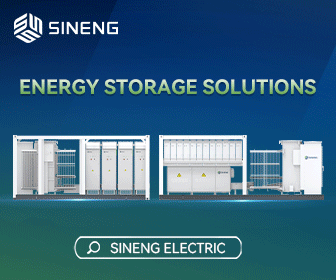Voith Hydro: Pumped Storage Hydropower a Critical Part of the U.S. Energy Future
"Pumped storage hydro is also essential for the further deployment of other renewable energy resources such as wind and solar," stated John Seifarth, Voith Hydro's Head of Engineering in the U.S. as part of his testimony to the Senate Energy and Natural Resources Committee. The Committee held a hearing earlier today to examine energy storage technologies, including pumped storage hydropower. Voith Hydro, located in York, Pa. has either supplied or modernized major generating components for about half of the pumped storage hydro facilities in the United States, giving the company a unique perspective on the challenges and opportunities of the only proven utility-scale energy storage technology.
"Pumped storage hydro is the only proven form of large-scale energy storage, giving utilities and grid operators' stability and reliability," said Seifarth. "I am pleased the Senate Energy and Natural Resources Committee is examining pumped storage and other technologies, and I hope Members continue their work to advance all storage technologies. If we want grid stability, if we want to add more renewables to our energy mix, and if we want to keep electricity affordable, we must expand and modernize pumped storage hydro in the United States."
In his testimony, Seifarth noted that Voith Hydrohas supplied or modernized major generating equipment on some of the most notable pumped storage hydro projects in the United States, including Bath County in Virginia, Raccoon Mountain in Tennessee, Castaic in California, Bad Creek in South Carolina, and Muddy Run in Pennsylvania. Though there are only 42 pumped storage facilities across the U.S. (with nearly 2,200 non-pumped storage hydropower facilities), they represent over 20% of the installed hydropower capacity in the country. According to the Department of Energy's Hydropower Vision report, with the right policies in place, pumped storage hydropower can increase by 36 gigawatts by 2050, up from the current capacity of just under 22 gigawatts.
Policy recommendations in Seifarth's testimony include:
- Hydropower licensing reform to streamline and shorten what can be a cumbersome process. The Energy and Natural Resources Act, introduced by Chairman Lisa Murkowski and Ranking Member Maria Cantwell, contains provisions to streamline that process, and also requires FERC to expedite the review of closed-loop pumped storage projects.
- Properly valuing pumped storage hydropower and its benefits to the electric grid, including the stability and flexibility it provides for the expansion and development of intermittent sources like wind and solar. The DOE's recent Grid Study acknowledged these benefits and stressed the need for more storage capability to account for a quickly-changing energy supply.
- Reinstating the Investment Tax Credit (ITC), and adopting one specifically for new pumped storage projects, and more generally exploring ways in which the tax code can incentivize pumped storage hydro development.
- Continued funding and support for the Department of Energy's Water Power program, which advances pumped storage research and development, and ultimately deployment of new turbine designs.
You can view Seifarth's written testimony and archived hearing video here.
Voith | www.voith.com









